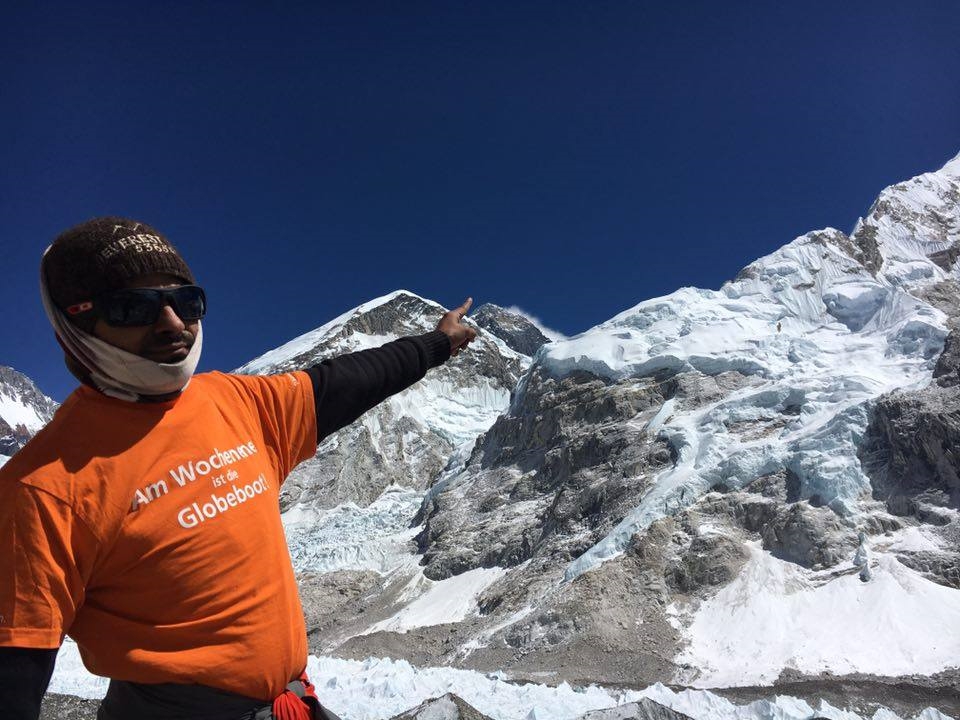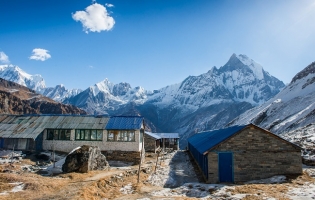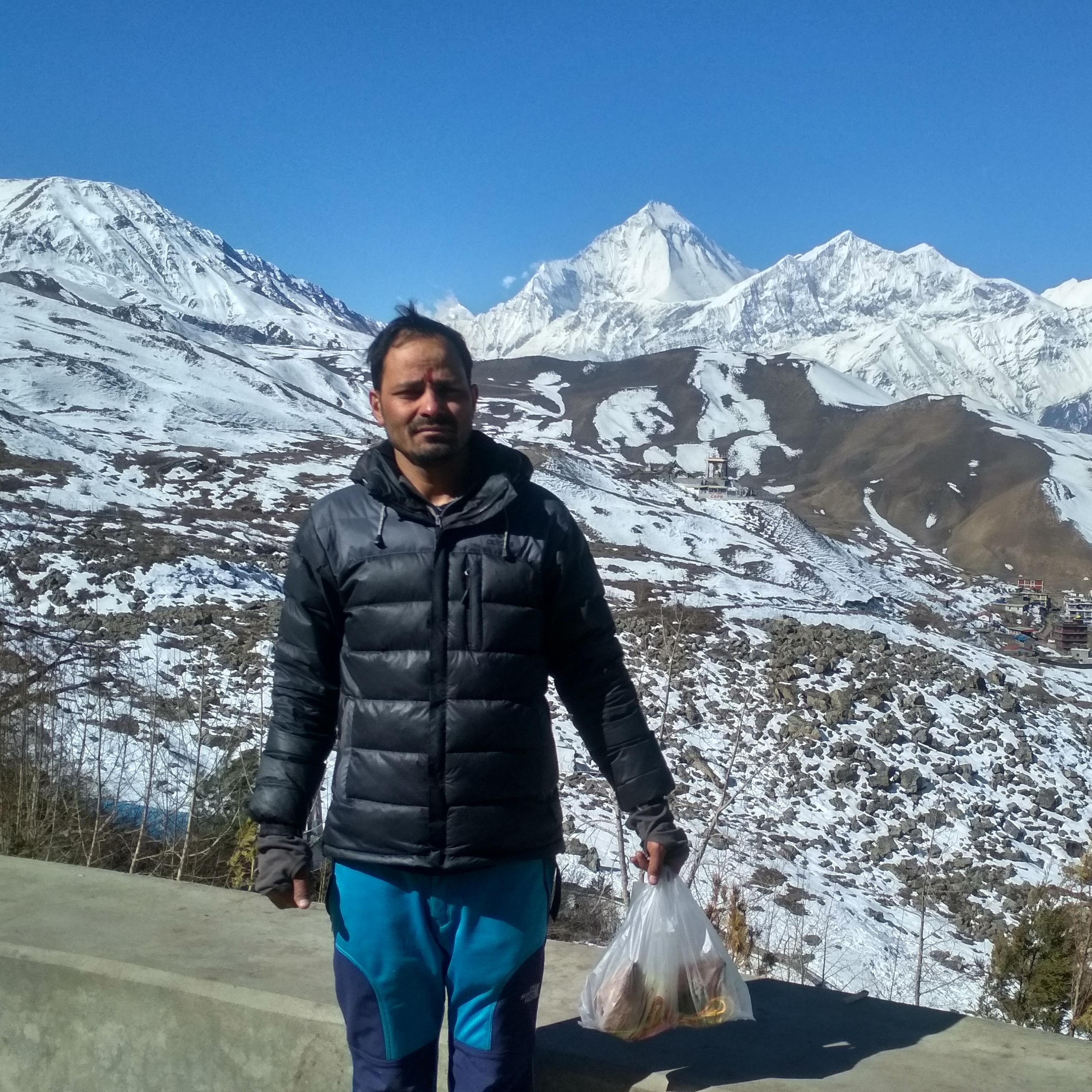Annapurna Base Camp Trek
Annapurna Base Camp Trek Highlights
- Highest point annapurna base camp (4130m)
- A beautiful spot machhapuchhre base camp (3700m)
- Renowned and charming village ghandruk and chhomrong
- Jhing natural hot spring
- Life style and culture of gurung and other people
- Number of suspension bridge
- Eye catching view of annapurna south, hiunchuli, barahi shikhar, annapurna 1, glacier dom, gangapurna, annapurna 3, and machhpuchhre etc
- Trek is mostly peaceful hike on the jungle and terrace
- The trek will be on the annapurna conservation area project (acap)
- You will pass small villages or tea house every 2 hours walk
Annapurna Base Camp Trek is arguably one of the most well-known, admired, or talked about treks in the world. It provides breathtaking views of the mountains and provides windows of opportunity to experience a typical Nepali village, the locals, and their way of life in the Himalayas of Nepal. The route to Annapurna Base Camp passes through picturesque villages of Magar and Gurung, dense forests of alpine and bamboo, and breathtaking scenery before arriving at the trip’s ultimate destination, Annapurna Base Camp, which is located at an elevation of 4130 meters (13546 feet).
Natural Experience
The trail is equally amazing for experiencing the outdoors. On the third day of our trek, we head to Poon Hill for a leisure trip before sunrise in order to witness the stunning sunrise. We leave our luggage at the hotel in Ghore Pani. One of the best places to see the sunrise and the mountain vista on this hike is Poon Hill. Similarly, we can explore Mount Dhaulagiri, the Annapurna range, Machhapuchhre (Fish Tail), and Butterfly Peaks in the far western region from the summit of POON HILL. Though Annapurna trekking is a once-in-a-lifetime mountain vacation experience in Nepal, being at the foot of the enormous Annapurna (8091m) and having 360-degree views of the surrounding mountains is breathtakingly breathtaking.
Hot Springs
This place offers natural hot springs close to Jhinu Danda, where you can bathe in the shade of the mountains and cleanse your soul. It is said that bathing in hot spring water relieves aches and pains.
Culture and Religion
People from many cultures and traditions coexisted in Nepal, a multicultural nation. Thus, the majority of the population in this area, known for the Gurkha regiment, is Magar and Gurung. In addition, you can see mongoloid Himalayan people in the Himalayas and Chhetris in lower elevations. The Everest, Manaslu, and Lantang regions are where Nepal Holiday Treks and Tours Pvt. Ltd. suggests visiting if you’d like to learn more about the cultural diversity of the Himalayas. But since so many people hike Annapurna every year, there’s no denying that it has the best scenery.
Best Season to do Annapurna base camp short trek
Please be advised that the short trekking to Annapurna Base Camp will take place in the spring, from March to May. This is because the days are longer and there is more sunlight from early in the morning until late at night, which makes it easier to cover a greater distance each day to reach the designated overnight stops. Trekking the Annapurna region allows you to experience amazing wildflowers, particularly azalea, or rhododendron, as well as a view of vibrant hills and a clean, pleasant atmosphere.
Altitude Sickness
Altitude sickness typically happens when you ascend to a high altitude too quickly. At high altitudes, your body tries to adapt to the lower oxygen levels and lower air pressure, which can cause symptoms like fatigue, headaches, and nausea. Here are a few strategies to help you avoid experiencing altitude sickness:
- Stop and rest where you are.
- Do not go any higher for at least 24 to 48 hours.
- Make sure you are drinking enough water.
- Do not smoke, drink alcohol, or exercise.
Travel Insurance
Travel insurance is required for any trek in Nepal, including the Annapurna Base Camp trek. Make sure your travel insurance includes coverage for unexpected emergencies and high-altitude trekking when purchasing it. You can also get coverage of other activities such as mountaineering, hiking, and adventure sports. In the case of an unplanned accident, it can provide you with financial security and peace of mind.
Guide and Porter
It is mandatory for all hikers to hire a certified trekking guide and obtain a TIMS card from approved trekking agencies that are registered with the Nepalese government. Crucially, Nepal Holiday Treks and Tours Pvt. Ltd. is a trustworthy business that can offer you a porter and guide who is both technically sound and safe. They always have the necessary supplies, first aid kits, and safety equipment on hand.
Foods and Accommodations
A staple dish of Nepali cuisine is dal bhat, a curry made with organic, healthful fresh green vegetables. Meals are served at tea shops and lodges, and they frequently combine western and Nepalese cuisine. Vegetarian options are also available. Throughout the hike, you will savor a wide variety of delectable foods.
The lodging is simple, usually consisting of a shared room with twin beds. Some tea houses may have common areas where you can relax and chat with other hikers.
Annapurna Base Camp Trek Itinerary
Arrival at Kathmandu and Transfer to Hotel
Sightseeing in Kathmandu Valley
Drive from Kathmandu to Pokhara
Trek from Pokhara to Tikhe Dhunga via Nayapul
Trek from Tikhe Dhunga to Ghorepani
Trek from Ghorepani to Tadapani via Poon Hill
Trek from Tadapani to Chhomrong
Trek from Chhomrong to Dobhan
Trek from Dobhan to Deurali
Trek from Deurali to Annapurna Base Camp (ABC)
Trek From Annapurna Base Camp to Sinuwa
Trek from Sinuwa to Gandruk
Trek from Gandruk to Nayapul and Drive to Pokhara
Drive form Pokhara to Kathmandu
Departure at International Airport
Annapurna Base Camp Trek Inclusions
What's included
- Airport pick up and drop by car
- 3 Night Hotel in Kathmandu B/B
- Sightseeing in Kathmandu
- 2 Night Hotel in Pokhara B/B
- Three times meals a day- Breakfast, Lunch, Dinner and accommodation in teahouse/ lodge during the trek
- One experienced (government licensed) and qualified English speaking guide
- One porter for two trekkers
- Guide/ Porters: food, lodge, transportation, salary, insurance, equipment etc
- TIMS card and ACAP Permit fee for trekking
- Kathmandu-Pokhara-Kathmandu by Tourists Bus
- Pokhara-Nayapul-Pokhara by a private vehicle
- All taxes and company service charge
- Medical support Kit Box
- Farewell Dinner(Nepalese Cuisine)
Add-ons
What's not included
- International airfare and visa fees
- Lunch and dinner in Kathmandu
- Personal expenses of bar and beverage bills, wifi, hot shower, bottle of water, extra porters, laundry or any other things which are not mentioned by the company
- Your trekking gears and extra nights in a certain destination
- Your travel insurance which should include the emergency rescue
- Tips for your guide and porters
- Entrance fees during the sightseeing
- Extra expenses due to any event such as strikes, weather conditions, or flight delays
Annapurna Base Camp Trek FAQs
How do I prepare for ABC trek?
Hiking on rugged terrain high in the mountains for several days is part of the journey to Annapurna Base Camp. A few months prior to the trek, it's a good idea to start strengthening your body and increasing your stamina. To strengthen your legs and heart, try hiking, jogging, cycling, and climbing stairs. Exercises that strengthen your entire body can also be added. Some examples are pull-ups, push-ups, planks, and squats.
Is travel insurance necessary for the Annapurna Base Camp trek?
Undoubtedly, having travel insurance that covers medical costs and helicopter rescue up to the highest trekking point is imperative.
Is there facility of electricity and Wi-Fi in this Trek?
On the Annapurna base camp trek, every teahouse where you spend the night has electricity. You can recharge your laptops, iPads, and phones using micro-hydropower and solar panels for a nominal cost. Since there are no free Wi-Fi hotspots along the trekking trail, we do not recommend bringing your laptop. While Wi-Fi is available for an hourly fee at some teahouses, don't expect fast connectivity on the more isolated trails.
How is the weather during the trek?
The weather at Annapurna Base Camp varies depending on the season. The snow-capped Himalayan region never gets extremely hot, even in the summer. The greatest recorded temperature during the day is 25°C, or 77°F, and the lowest temperature at night is occasionally -20°C, or -4°F. Over the course of the trekking journey, the lower hiking regions are significantly warmer than the base camp. It can get pretty warm in the spring, especially during the day when there are no snowflakes or clouds.




